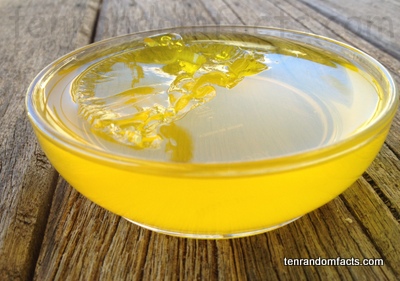Wobble, wobble goes the jelly.
- Jelly is a sweet food item made primarily of gelatine, a flavour and a sweetener.
- ‘Jelly’ is also known as ‘jello’, ‘gelatine’ and ‘gelatine dessert’.
- Jelly was originally made by using the gelatine from an animal, most commonly a young cow’s foot, and mixing the extract with sugar and fruit juice.
- Jelly is often used for dessert, typically moulded into shapes, or used in cakes or put into cups.
- Home-made jelly is most commonly made by dissolving gelatine, sweetener and fruit juice into a hot liquid, such as water, and allowing the mixture to cool and set.
- Jelly is often commercially sold as ‘instant’ crystals or powder in packets, as shots or as solid cubes.
- Gelatine, which is mainly protein and a significant ingredient in jelly, can be replaced with similar gel making carbohydrates that come from plants.
- Some fruits when unprocessed, such as pineapple, figs, papaya and kiwifruit, contain enzymes that break up gelatine, so including these fruits does not allow jelly to set.
- Jelly is high in sugar and contains a high portion of phosphorus and sodium.
- Jelly, when set, has a spongy texture and is often described as ‘wobbly’, and it comes in many different colours, coloured by food colouring, additives and/or fruit juice.
Bibliography:
Gelatin Dessert, 2014, Wikipedia, http://en.wikipedia.org/wiki/Gelatin_dessert
History of Jelly, 2012, Hong Kong Tatler, http://hk.dining.asiatatler.com/features/a-history-of-jelly







